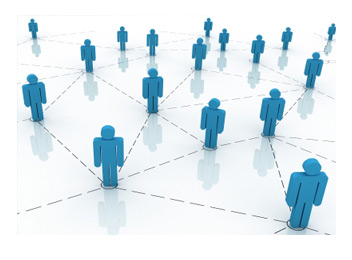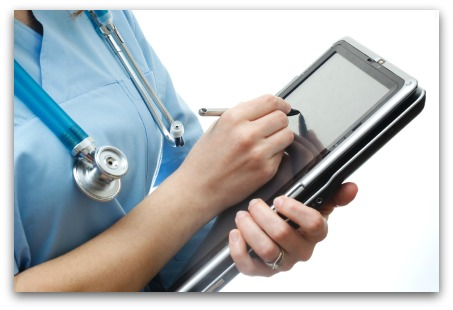How Hospitals can use RTLS technology to cut nursing response times & increase HCAHPS Scores:
Workflow in a hospital needs to be efficient in order to avoid chaos and increase quality of care. By implementing technology to cut nurse’s response times and reduce patient wait times will not only make a nurse’s day go more smoothly, it can dramatically boost a hospitals’ bottom line.
By integrating a Responder 5 nurse call system and a real time locator system (RTLS) using badges or smart phones (as badges) will allow hospitals to connect the “last mile” of patient integration. Meaning, we have connected most areas of the hospital around the EMR, like pharmacy, labs, etc., however, this is the final and the most important piece of that connection, because it affects how the patient and staff interact and communicate at the bedside.
When we can communicate and interact on this level, patient reviews reflect it in the HCAHPS scores, which in turn are a direct correlation to Medicare reimbursements, thus affecting a hospital’s bottom line. When this patient/staff interaction doesn’t work well or breaks down, wait times go up in the ER, potential patients leave without being seen and patient experience goes down from the ER to the acute care setting.
Real Time Locator Systems
Using RTLS for patient locating in the ER allows hospitals to have full visibility into what we call “time to vitals” – that being the amount of time between when the patient begins the process and receives a transponder/locator to when a caregiver enters the exam room and begins vitals. This process can be tracked automatically and used for staffing adjustments/trending/training programs.
Once the patient moves from one room to the next or is admitted to a unit, the RTLS can trigger a notification for environmental services that the room is now vacant and needs to be cleaned and prepped for the next patient. Environmental services can then notify the admissions office once the room is ready via the same system to enable the fastest turnaround, thus speeding a hospital’s ER throughput and “time to vitals.” In doing so, it gives hospitals the best chance of lower wait times and higher HCAHPS scores.
Real time location systems also allow the nurse on call to document staff presence in each room and automatically cancel nurse call lights to help clinicians on the go. Both RTLS and the R5 nurse call system can help speed things up by giving hospitals a real time look of where its critical assets are located for expedited deployment.
Nurse Call Systems
Nurse call systems are the lifeline of communication from the patient to the caregivers’ world. Until now, nurse call systems have always been an intercom like system that was hardwired to complete a set number of tasks, with technology advancing, there are new systems available, such as Rauland’s Responder 5, which is flexible and has a variety of ways to best automate clinical processes.
Integrating a nurse call system allows for real-time status monitoring of the bed exit alarm, head and foot rails, brakes, head-of-bed angle and weight, giving nurses and other caregivers the data they need to cut their response times. Nurse call systems also facilitate automated risk protocol monitoring to help minimize falls, pulmonary and skin complications.
Other Systems to Consider
Although nurse call and RTLS are the two main systems that will help cut nurses response times and patient wait times, implementing other systems, processes and integrations will also lead to a more efficient workflow, as well as increased HCAHPS scores, positively impacting hospitals’ bottom lines.
Integration software is the critical must-have feature. This allows for EMR integration, which is bi-directional digital data integration between nurse call, smart beds, EMR systems and wireless devices that produce a workflow that is more automated around the clinicians’ real workflow and allows them more efficiency at the bedside with their patient.
Implementing a wireless handset system for nurses will directly send nurse calls and bed events, like bed exit alarms, to caregivers ensuring they have a continuous pulse on patient needs. Another great time saver is allowing the patient to reach the right caregiver at the right time. For example, if a patient needs water, they can push the water button and the CNA is called to respond, not the RN, however if the pain button is pushed, the RN is notified and possibly the pharmacy, depending on the unit workflow.
Not only does this allow for reduced falls, location of staff to reduce time spent finding the right caregiver, accurate and time stamped documentation of staff time with patients, enhanced coordination between nursing and other departments like pharmacy, environmental services, case managers, etc., enhanced emergency department throughput and data transparency to enable enhanced workflow reporting, it also increases patient satisfaction and HACAHPS scores.
One of the most important processes that hospitals can put into place is reporting. By connecting this “last mile” hospitals are providing a transparency into gathering data that will allow them to provide their executive team with an accurate overview of workflow and also allow them to use reports that enable caregiver efficiency, provide answers to frequent questions and enhance the patient experience, in result impacting their bottom line.
About the Author
Edward Baird, Director of Sales, has more than 20 years of experience in the communication, clinical informatics, security and life-safety technology industry. Beacon Communications, LLC is an industry leader in providing full-service crucial communications and security systems to the healthcare, government municipality, education and commercial real estate markets throughout Colorado and many neighboring states.


